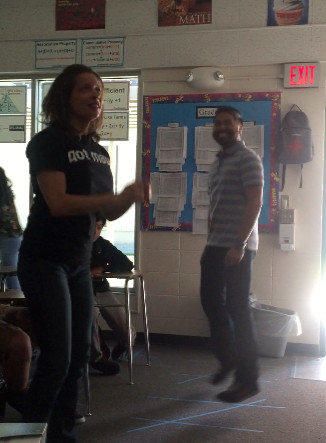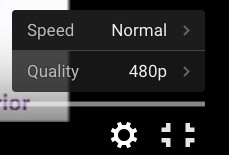Incorporating movement into math lessons can transform abstract concepts into tangible, memorable experiences. Inspired by the popular game Dance Dance Revolution, the Dance Dance Transversal activity, initially conceived by Algebrainiac and popularized by J.J. Martinez, cleverly merges physical activity with geometry, specifically the relationships between angles formed when two parallel lines are intersected by a transversal. This innovative approach not only caters to kinesthetic learners but also injects energy and fun into what can often be perceived as a dry subject.
J.J. Martinez, known on Twitter as @MrMartinezRUSD, first introduced Dance Dance Transversal through online math teacher communities. Recognizing its potential, he developed a PowerPoint presentation reminiscent of Dance Dance Revolution, complete with music, to guide students through the “Dance Dance Moves” representing different angle pairs. As educators began adopting this method, the demand for more diverse music and customizable templates grew, leading to a collaborative expansion of resources.
You can access the original Dance Dance Transversal PowerPoints and templates, contributed by numerous teachers, at these links: Dance Dance Transversal Powerpoints and Folder. For those interested in exploring similar kinesthetic math activities, you might also find inspiration in Tap Tap Trigonometry, which applies a similar concept to trigonometry.
 Students reacting to tape lines on the floor for a math dance activity
Students reacting to tape lines on the floor for a math dance activity
Teaching the Essential Dance Moves for Geometry
The success of Dance Dance Transversal hinges on clearly teaching the foundational “dance dance moves”. Thorough instruction and practice are crucial to prevent student frustration and ensure the activity remains enjoyable and effective. Before diving into the music and rhythm, dedicate time to explicitly teach each dance move associated with different angle relationships.
Dance Move 1: Alternate Exterior Angles
Begin by visually representing alternate exterior angles. Draw a diagram on the board showing two parallel lines intersected by a transversal, clearly highlighting a pair of alternate exterior angles. Engage students by asking them to describe what they observe in the diagram, guiding them to identify the “alternate exterior angles.” Reinforce the terminology through repetition and whole class response. For example, ask, “What’s dance move number one?” and have all students respond in unison, “Alternate Exterior Angles.” This technique maximizes participation, reinforces academic vocabulary, and creates a supportive environment for all learners.
Dance Move 2: Alternate Interior Angles
Repeat the process for alternate interior angles. Draw a new diagram, identify the angle pair, and lead a class discussion to ensure understanding. Use the same whole class response technique to solidify the term “Alternate Interior Angles”. Consistent repetition across different angle types is key to memorization.
Dance Move 3: Corresponding Angles
Introduce corresponding angles using a similar visual and interactive approach. Diagram the angle relationship, facilitate student description, and implement the targeted whole class response for “Corresponding Angles.”
Dance Move 4: Same Side Interior Angles
Finally, explain same side interior angles, again using a diagram, description, and whole class verbalization. Ensure students understand that “Same Side Interior Angles” is the fourth dance move in their repertoire.
After individually teaching each of the four dance moves, it’s time for integrated practice. Start by reviewing all four moves in sequence using whole class responses. For instance:
- Teacher: What’s dance move #2?
- Students: Alternate Interior Angles!
- Teacher: Dance move #1?
- Students: Alternate Exterior Angles!
- Teacher: Dance move #4?
- Students: Same Side Interior Angles!
- Teacher: Dance move #3?
- Students: Corresponding Angles!
Once students can verbally identify each dance move, transition to physical practice on their prepared “dance floors” (tape markings on the floor representing parallel lines and a transversal). Call out a dance move, for example, “Everyone, what is dance move number 1?” and after the class shouts “Alternate Exterior Angles,” instruct, “Show me!” Circulate around the classroom with the classroom teacher, providing individual feedback and correction to ensure proper foot placement for each dance move. Repeat this “show me” exercise for all four dance moves, reinforcing the kinesthetic connection with the angle relationships.
To build fluency, implement “rapid fire” practice. After checking each dance move, call out angle relationships in quick succession: “Show me alternate exterior angles! Now the other set of alternate exterior angles! Alternate interior angles! The other set of alternate interior angles!” This rapid practice provides essential scaffolding, preparing students for success when the music begins. The goal is to automate the footwork so students can confidently dance and focus on the geometry concepts, ensuring the activity is both educational and enjoyable.
Let’s Get This Math Party Started!
To launch the full Dance Dance Transversal experience, music is key. Starting with a familiar and energetic track like Michael Jackson’s “Billie Jean” can immediately engage students. As you initiate the Dance Dance Transversal PowerPoint presentation, the music will play, and the angle relationships will appear on the screen, scrolling upwards in a Dance Dance Revolution style.
To ease students into the rhythm, pause the presentation just before the first “dance dance move” is required. This pause allows students to anticipate the move and position their feet correctly. Once you observe that most students are ready, resume the presentation until the next move is prompted. Continue this pause-and-play approach for the first several moves (approximately 8-9). This gradual introduction builds confidence and allows students to acclimate to coordinating the visual prompts, music, and dance steps. By this point, students are typically ready to dance continuously with the music and visual cues.
Modifications, Tips, and Extensions for Dance Dance Transversal
Dance Dance Transversal is adaptable to diverse learning needs and can be extended to enhance the challenge and engagement.
-
Individualized Support: For students who struggle to simultaneously process the PowerPoint and dance, offer individualized support. Stand beside them and verbally cue the dance moves, allowing them to focus on their footwork without the added demand of screen monitoring. Mirroring the moves on an adjacent dance floor can also be beneficial, providing a direct visual reference closer than the screen.
-
Student Leadership: Encourage student leadership by inviting volunteers to announce the angle relationships to the class. This not only provides a break for the teacher but also empowers students and reinforces their understanding by having them articulate the concepts.
 Student volunteer leading dance dance transversal activity
Student volunteer leading dance dance transversal activity
-
Video Feedback: Record a short video of the class dancing early in the activity. Later, when energy levels dip or as a reward, play back the video. Students overwhelmingly enjoy seeing themselves and their classmates engaged in learning through dance.
-
Teacher Participation: Don’t hesitate to dance alongside your students! Teacher enthusiasm is contagious and modeling participation breaks down barriers. Embrace the fun and show them that math can be playful.
-
Increase the Challenge: As students become proficient, they will likely crave a greater challenge. The PowerPoint templates allow you to adjust the tempo of the music. Increasing the speed ramps up the difficulty, testing their mastery of the “dance dance moves” and angle recognition under pressure. Conversely, slowing down the tempo can be helpful for students who need more processing time or for review. Tempo adjustments are easily made via the settings button within the PowerPoint playback controls.
 PowerPoint setting to adjust dance dance transversal speed
PowerPoint setting to adjust dance dance transversal speed
- Expand the Dance Moves: For an added layer of complexity, introduce a PowerPoint version that incorporates five dance moves by including Vertical Angles. This expands the geometric concepts and provides a richer dance experience.
 Diagram of vertical angles for dance dance transversal
Diagram of vertical angles for dance dance transversal
- Versatile Application: Once students are familiar with Dance Dance Transversal, integrate it as a versatile classroom tool. Use it as an engaging opening activity to activate prior knowledge, as a rewarding break after focused work, or as a dynamic review session, particularly on days like Friday afternoons when energy might be waning.
Dance Dance Transversal offers a unique and effective method to teach angle relationships in geometry. By blending physical movement with mathematical concepts, it caters to diverse learning styles, boosts student engagement, and transforms math class into an active and enjoyable experience. Encourage your students to get moving and master those “dance dance moves” to unlock a deeper understanding of geometry!

